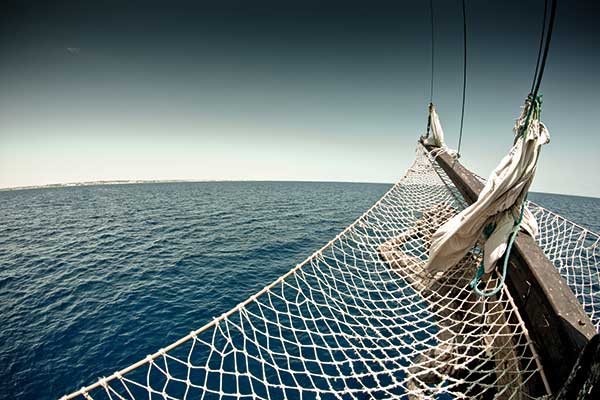Now Bring me that Horizon
Career strategies for young European scientists
by Ralf Schreck, Labtimes 05/2014
Page 1 | Page 2 | Page 3
Horizon 2020, the largest EU programme for research and innovation ever, just started. Jump on the bandwagon and take your chance.
Horizon 2020 was kicked off earlier this year after fierce debates over its financial resources. Participating countries finally committed themselves to contribute about €80 billion over the next seven years. Horizon 2020 was again all over the news, when Swiss voters approved a referendum restricting immigration in February. In turn, the EU put negotiations on the participation of Switzerland in Horizon 2020 temporarily on hold.
The first funding announcements or calls in the EU terminology have already shown that the demand for European money remains high. Many programmes have been heavily oversubscribed with little prospect of success. For researchers in countries where investments into science and innovation have been scaled down in face of economic difficulties, the access to euros from Brussels has become a matter of survival. As genuinely new elements of Horizon 2020, the funding of the whole innovation cycle from basic research to the market, revised rules making the participation simpler, easier as well as more flexible and, for the first time, the orientation of funding priorities towards societal challenges, such as health or clean energy are touted. Here, Lab Times will not try to give a comprehensive overview on Horizon 2020 but focus instead on funding possibilities for mobile early-career scientists.
The basics of Horizon 2020
Despite the dimensions of Horizon 2020, it is just a small part of the pan-European growth strategy called Europe 2020. Several flagship initiatives, such as the Innovation Union, Resource-efficient Europe or the Digital Agenda for Europe have been launched to reach Europe’s ambitious goals concerning innovation, employment, climate/energy and social inclusion at the end of the decade. The whole package totals €960 billion for the period 2014-2020, out of which one-twelfth or €80 billion is earmarked for Horizon 2020.
Although it is no longer called Framework Programme, Horizon 2020 is the 8th consecutive programme, which has been implemented initially by the European Union/European Commission as Framework Programme for Research and Technological Development with the central goal to support research in the European Research Area. The first Framework Programme (FP) started in 1984 with a budget below €4 billion. Since then, objectives, measures and rules have been constantly changed. In this context, some critics have noted that devising more or less creative designations for old hats is no justification to afford cohorts of highly paid EU officials.
One should keep in mind: neither the budget nor the measures within a single framework are fixed. Whereas the overall directions of the ongoing seven-year programme will remain more or less stable, funding streams might be redirected and funding measures abandoned or significantly changed during this period. So it is highly advisable to stick to the most current guidelines and forms.
Horizon 2020 has three major priorities: Scientific Excellence stands for science-driven research, Industrial Leadership takes care of the development of key technologies and the enhanced participation of the business sector, and Societal Challenges tackle seven focus areas such as “health, demographic change and well-being” or “food security, sustainable agriculture and forestry, marine and maritime and inland water research, and bioeconomy” by interdisciplinary approaches.
Your starting point for the exploration of Horizon 2020 is its official EU website or the Horizon 2020 Participant Portal (see box on pg. 57). The Participant Portal is your one-stop-shop, where the European Commission for the first time brings together information and services that have been widely spread in the past. For example, you may use keywords or free text searches to locate your funding opportunities. Additional help is provided via links to several help desks and additional portals, including the general Horizon 2020 Helpdesk for all aspects of European research or the IT Helpdesk for questions on tools you have to use for registration, proposal submission, grant preparation and so on. In addition, there are contact points for your questions concerning, for example, ethics or intellectual property rights.
Crossing borders with Marie Curie
As an early-career scientist, you may benefit directly from Horizon 2020 by mobility measures in frame of the Marie Skłodowska-Curie Actions or by the excellence grants provided by the European Research Council, ERC. (For more on the ERC, read our interview with ERC vice-president, Carl-Henrik Heldin, in the last issue of Lab Times.)
Under the brand “Marie Curie” ten thousands of scientists have been sent across Europe and beyond, since 1996. For Horizon 2020 the success story continues as Marie Skłodowska-Curie Actions (MSCA) in order to highlight the Polish roots of the first ever woman to win a Nobel Prize and the only woman to receive Nobel Prizes in two different disciplines – Physics (1903) and Chemistry (1911).
Curie Actions have been quite well-positioned together with the European Research Council in the priority Excellent Science of Horizon 2020, where it sends a strong message for high-quality, bottom-up research. The overall programme budget was raised by about 30% to €6.2 billion in comparison to the last Framework Programme. To get an idea on the impact: until 2020, a total of 65,000 researchers, including 25,000 PhD students, will receive support and are expected to generate 250,000 publications in high tier, peer-reviewed journals, 1,500 patent applications and 100 spin-offs. Over the years, the Marie Curie programme has evolved from a research-only fellowship programme to a mobility and career development programme, putting emphasis not only on research training but also on the acquisition of additional employability skills and on the improvement of the overall working conditions for scientists.
There have been a few changes in comparison to the previous FP but mobility remains the name of the game and follows the so-called “triple-I-dimension”: international for mobility between countries, intersectoral for mobility between the academic and non-academic sector as well as interdisciplinary for mobility between scientific disciplines.
There are four main measures: firstly, individual-driven fellowships (IF) for more experienced researchers, normally postdocs, supporting mobility between countries, including an option to work outside academia; secondly, host-driven innovative training networks (ITN) for structured doctoral training; thirdly, research and innovation staff exchanges (RISE) for short-term exchanges of researchers but also of technical, administrative or management staff; and, finally, co-funding (COFUND) of existing or novel postdoctoral and, for the first time, also of doctoral programmes at the regional, national or international level. In general, there is one call per action and year with details including deadlines already made available ahead in the two-year Work Programmes.
Knowing the ropes
Marie Skłodowska-Curie Actions follow the bottom-up approach, meaning that there are no pre-defined research topics. Supported are researchers irrespective of age, falling into one of two categories: The Early-stage researcher with no doctoral title and less than four years of full-time research experience after graduation at the time of recruitment (ITN, COFUND) or secondment (RISE), and the Experienced researcher with a doctoral title or more than four years of full-time research experience at the deadline of proposal submission (IF), recruitment (COFUND) or secondment (RISE).
With the exception of RISE, where only already existing personnel is sent across international or intersectoral borders, the Marie Skłodowska-Curie Fellow becomes a full-time employee of his or her new host institution with a regular contract and social security coverage. The common practice of the past to provide fixed-amount fellowships with limited or no social services is only possible, if national regulations prohibit employment via an employment contract and requires prior approval by the Research Executive Agency (REA), which is one of several funding bodies set up by the European Commission to manage parts of Horizon 2020 and beyond. The mandatory mobility rule says that a researcher may apply for MSCA only if he has been working or living in his potential host country for no longer than 12 months within the last three years.
There are several ways to become a Marie Skłodowska-Curie Fellow. You may apply together with your future host institution for an individual fellowship, as done by several hundreds or even thousands of colleagues each year. In 2013, success rates for those fellowships were around 9 to 15%. A second way to go is to apply for a fellowship within a doctoral or postdoctoral programme, receiving support by COFUND. In this case, you have to write a proposal, too and your chances of success depend on the competitiveness of the specific fellowship programme, offered by an institution or a funding organisation. For example, in the EMBO Long-Term Fellowship programme, which is co-funded by MSCA, the success rate in 2013 was about 11%. Upon approval, you become both a Marie Skłodowska-Curie and EMBO Long-Term Fellow.
Less time-consuming and paired with good chances for success is the final opportunity, which requires a job application for a vacancy offered by a host institution that has been successful in obtaining EU funds, for example, for an international training network. Vacancies for PhD students or postdocs are advertised by the host institutions and/or on the job section of the EURAXESS website.
Going global
For Horizon 2020, the four distinct fellowships of FP7 have been amalgamated into two major fellowships: Global Fellowships and European Fellowships. Both may be hosted, for example, by universities, research institutions, hospitals or museums but also by private enterprises. In the gibberish of Horizon 2020, your host institution is the beneficiary and appoints your supervisor, signs the grant agreement, claims costs and receives funding as well as takes the whole responsibility for executing the project as specified in your fellowship application.
For the Global Fellowship you have to be a national of one of the 28 EU Member States or of one of several so-called Associated Countries such as Israel, Norway or Turkey, which have signed association agreements with the European Commission. Associated countries have to make financial contributions in order to participate in part or all of Horizon 2020 and, in turn, are eligible to receive EU funds. If you are no national, you may also apply in the case you are a long-term resident. As a long-term resident, you have worked or lived already in those countries for at least five years. For the outgoing phase of the global fellowship, you have to move into a so-called Third Country for at least 12 to a maximum of 24 months and return to Europe for 12 months thereafter. Third Countries are all countries that are neither EU Member States nor Associated Countries and that are not targeted by specific sanctions or restrictive measures by the EU. Your institution in the return period signs the contract with the Research Executive Agency and may transfer parts of the EU money to the partner organisation in the Third Country, as specified in the partner agreement.
Page 1 | Page 2 | Page 3
Last Changed: 16.09.2014








